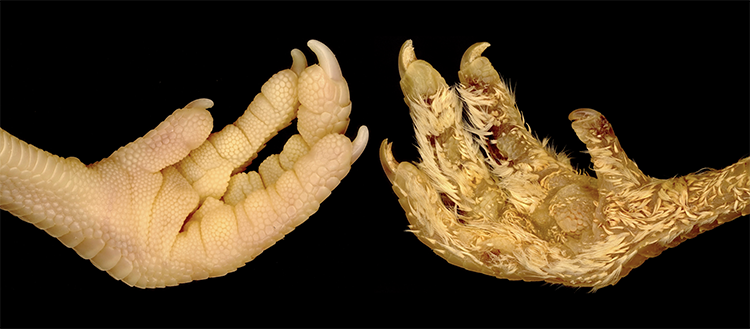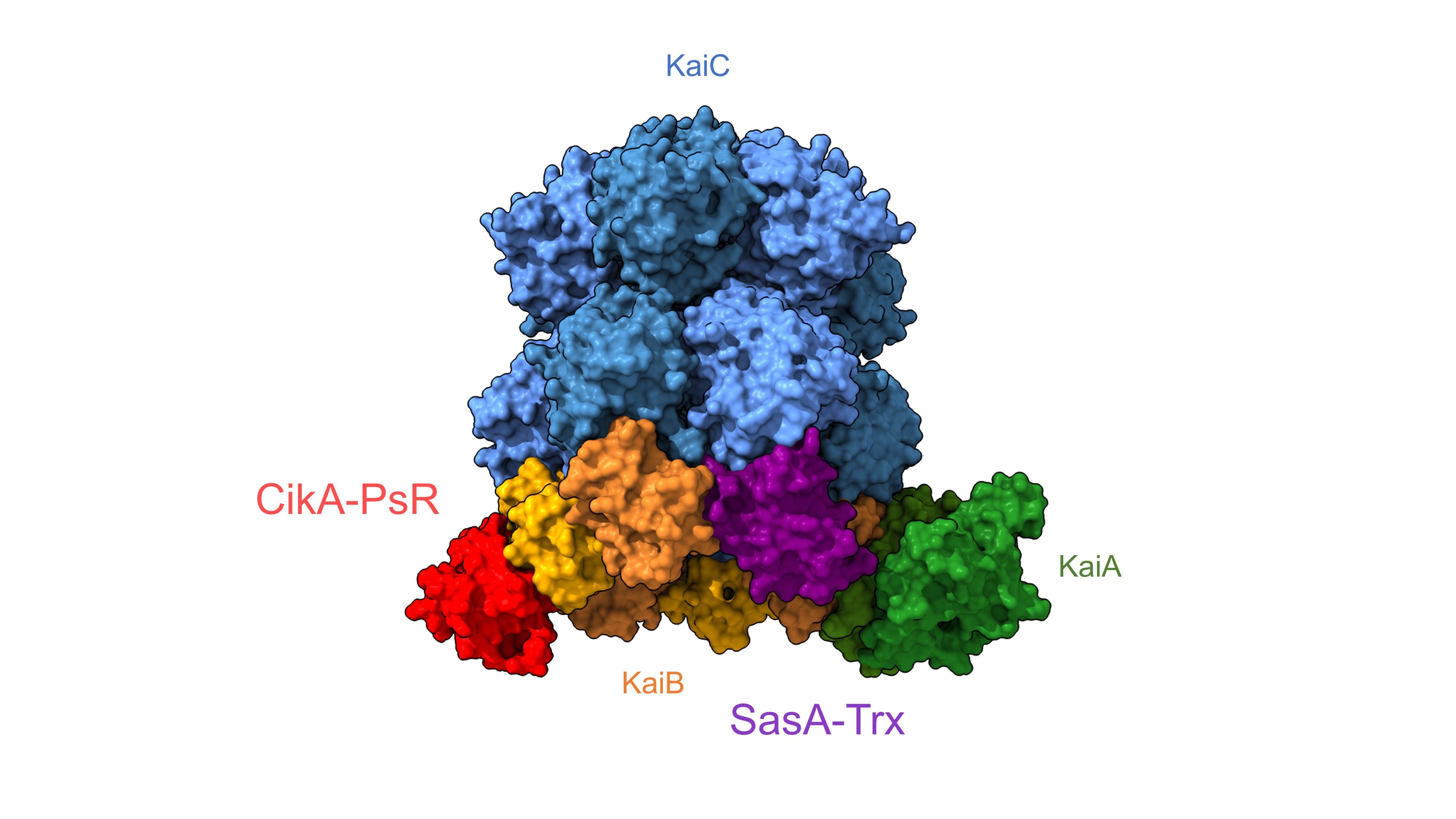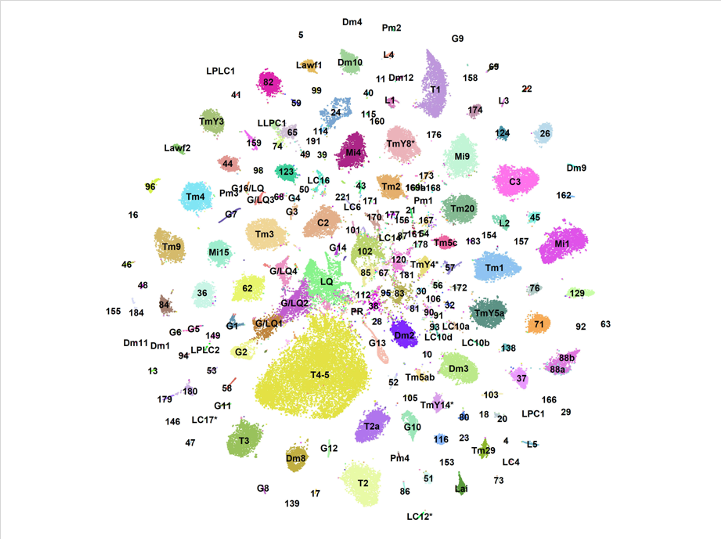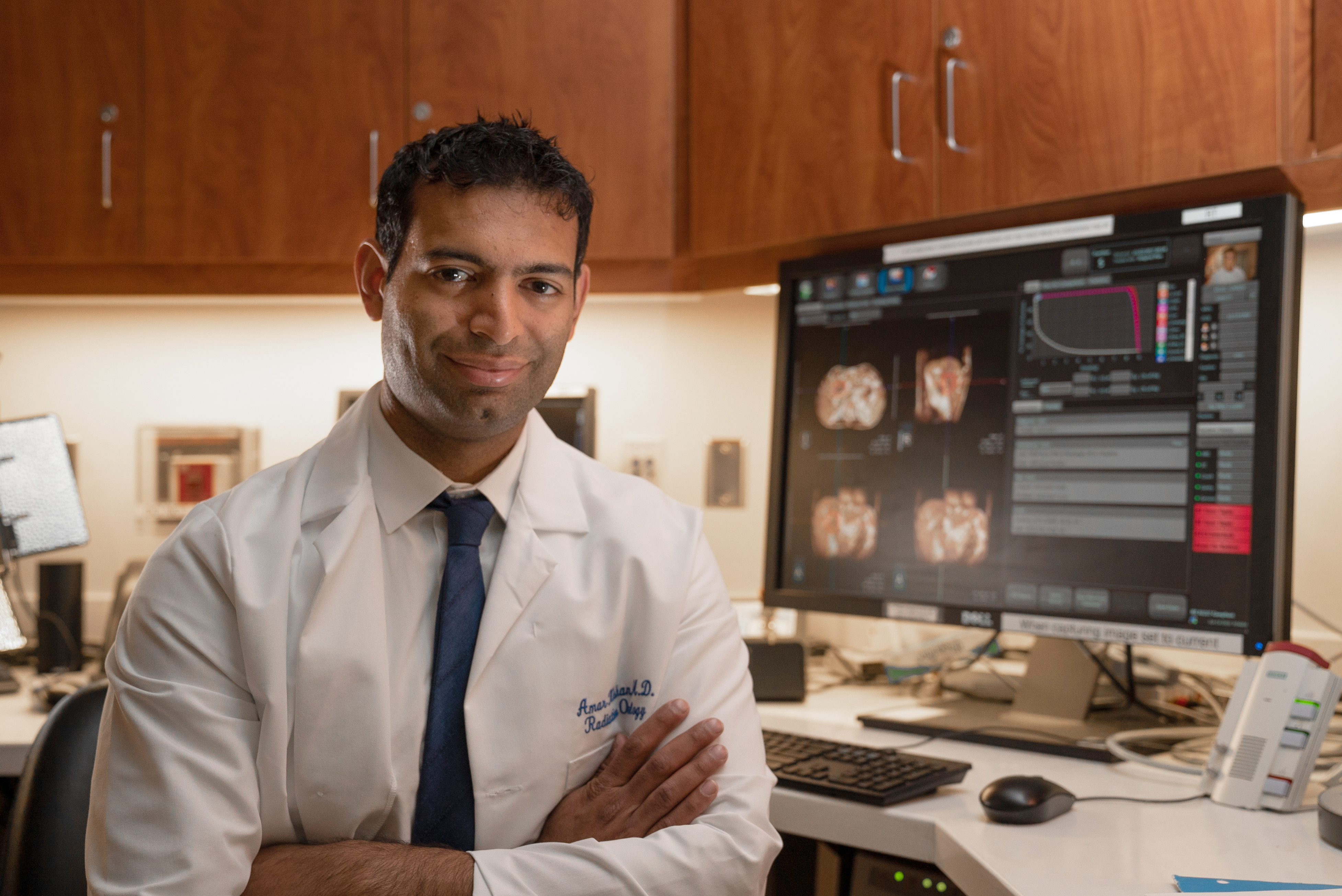Cell biologist embraces new tools to study human development on the smallest scale

news, journals and articles from all over the world.

Cell biologist embraces new tools to study human development on the smallest scale
A recent study has discovered that SALT TOLERANCE HOMOLOG2 (CaSTH2), a gene in pepper, acts as a negative regulator of the plant’s defense mechanisms.
Wren Laboratories announced executive leadership for commercial operations and market expansion. Dr. Abdel Halim is appointed CEO and CSO. Troy Tremaine Appointed to CCO, Dr. Eva Szarek Head of Marketing, and Melissa Ferone director of quality. Expansion includes AI-driven mRNA liquid biopsy genomic assays for biopharma and diagnostics.
A RIPE team used CRISPR/Cas9 to increase gene expression in rice by changing its upstream regulatory DNA. Their work is the first unbiased gene-editing approach to increase gene expression and downstream photosynthetic activity and was recently published in Science Advances.
LA JOLLA, CA—Scientists at La Jolla Institute for Immunology (LJI) have developed a new computational method for linking molecular marks on our DNA to gene activity. Their work may help researchers connect genes to the molecular “switches” that turn them on or off. This research, published in Genome Biology, is an important step toward harnessing machine learning approaches to better understand links between gene expression and disease development.

For millions of years, underground fungi have lived in symbiosis with plant roots. Researchers have been able to study both sides of this interaction up close, using RNA sequencing to understand gene expression: one of the first cross-kingdom spatially-resolved transcriptomics studies to date.
Imagine if we could inhale scents that delay the onset of cancer, inflammation, or neurodegenerative disease. Researchers at the University of California, Riverside, are poised to bring this futuristic technology closer to reality.
People who experience heat stress during exercise may need more recovery time to let their muscles heal, according to a new mouse study published ahead of print in the American Journal of Physiology-Regulatory, Integrative and Comparative Physiology.
Scientists can now predict which single-letter changes to the DNA within our genomes will alter genetic instructions and disrupt development, leading to changes such as the growth of extra digits and hearts.
Led by scientists at UNC-Chapel Hill and UC-San Francisco, research reveals new non-coding genetic variants associated with Alzheimer’s disease functioning in microglia – brain cells already implicated in the progression of this often-fatal neurodegenerative condition.
New research shows how one transcription factor functions as a special “pioneer factor” by managing to bind to a blocked segment of DNA to begin the process of opening up and activating a gene.

The study by researchers at New York University, Columbia Engineering, and the New York Genome Center, combines a deep learning model with CRISPR screens to control the expression of human genes in different ways—such as flicking a light switch to shut them off completely or by using a dimmer knob to partially turn down their activity. These precise gene controls could be used to develop new CRISPR-based therapies.
Article title: Commensal microbiota regulate renal gene expression in a sex-specific manner Authors: Brittni N. Moore and Jennifer L. Pluznick From the authors: “This report demonstrates that renal gene expression is modulated by the microbiome in a sex- and tissue-specific…

Two researchers from the University of Geneva (UNIGE) have discovered how to permanently transform the scales that normally cover the feet of chickens into feathers, by specificially modifying the expression of certain genes.
The intricate process of flower development has long fascinated scientists seeking to unravel the mysteries behind nature’s precision timing.
A new CALM mutation causes lethal arrhythmia in humans. Using cardiomyocytes — or heart muscle cells — from human iPS cell and recombinant calmodulin proteins, the group studied catecholaminergic polymorphic ventricular tachycardia — or CPVT, a rare and life-threatening genetic condition. The team was able to reproduce severe arrhythmia in patient-derived iPS cell models of exercise-induced CPVT with calmodulin mutations.
Article title: Circadian gene expression in mouse renal proximal tubule Authors: Molly A. Bingham, Kim Neijman, Chin-Rang Yang, Angel Aponte, Angela Mak, Hiroaki Kikuchi, Hyun Jun Jung, Brian G. Poll, Viswanathan Raghuram, Euijung Park, Chung-Lin Chou, Lihe Chen, Jens Leipziger,…

Scientists have made progress in understanding the circadian clock, the 24-hour cycle that synchronizes with light-dark exposure, and how it functions. They developed a new way to study how the circadian clock synchronizes in real time, revealing surprises about the clock’s mechanisms.
Let’s say you needed to move an individual cell from one place to another. How would you do it? Maybe some special tweezers? A really tiny shovel?
Researchers from Oregon Health & Science University and institutions across the country have identified a pill used to treat a common skin disease as an “incredibly promising” treatment for alcohol use disorder.
The human body runs on a finely tuned clock synchronized to the 24-hour cycle of Earth’s rotation, known as the circadian clock, which controls various physiological processes such as the sleep-wake cycle, hormone production, and metabolism.
For the first time, researchers at UC San Diego have shown that changes in gene expression happen almost entirely during the transcription stage while the cells are growing. The researchers have provided a simple quantitative formula linking regulatory control to mRNA and protein levels.
Article title: Whole blood transcriptome characterization of young female triathlon athletes following an endurance exercise: a pilot study Authors: Attila Bácsi, András Penyige, Gergely Becs, Szilvia Benkő, Elek Gergő Kovács, Csaba Jenei, István Pócsi, József Balla, László Csernoch, Ildikó Balatoni…
Early life experiences can impact the activity of our genes much later on and even affect longevity, finds a new study in fruit flies led by UCL researchers.
The types of ocean bacteria known to absorb carbon dioxide from the air require more energy – in the form of carbon – and other resources when they’re simultaneously infected by viruses and face attack from nearby predators, new research has found.
National Eye Institute researchers mapped the organization of human retinal cell chromatin, the fibers that package 3 billion nucleotide-long DNA molecules into compact structures that fit into chromosomes within each cell’s nucleus. The resulting comprehensive gene regulatory network provides insights into regulation of gene expression in general, and in retinal function, in both rare and common eye diseases. The study published in Nature Communications.
Article title: Proteogenomics reveals sex-biased aging genes and coordinated splicing in cardiac aging Authors: Yu Han, Sara A. Wennersten, Julianna M. Wright, R. W. Ludwig, Edward Lau, Maggie P. Y. Lam From the authors: “In summary, this study shows that…
Mount Sinai researchers have published one of the first studies to demonstrate the importance of reactive oxygen species in maintaining stem cell function and preventing inflammation during wound repair, which could provide greater insights into the prevention and treatment of inflammatory bowel diseases (IBD), according to findings published in the journal Gut on October 3.
Article title: Human skeletal muscle acetylcholine receptor gene expression in elderly males performing heavy resistance exercise Authors: Casper Soendenbroe, Mette F. Heisterberg, Peter Schjerling, Michael Kjaer, Jesper L. Andersen, Abigail L. Mackey From the authors: “Taken together, the results demonstrate…
A recent publication from researchers at the University of Kentucky explains the importance of identifying and understanding how differences between tissues and cells alter gene expression without changing the underlying genetic code.
Scientists are starting to understand the precise workings of a type of gene that, unlike other genes, does not code for proteins – the building blocks of life.
Scientists have identified two subtypes of lung blood vessel cells. One subtype expresses more genes involved in inflammation and the regulation of the immune response; the other expresses more genes involved in cell regeneration and proliferation. The findings could lead to better treatments for lung infections.
Researchers seek to point a way toward a unified theory for how DNA changes shape when expressing genes. Presenting their work in Biophysics Reviews, the scientists use an approach called statistical mechanics to explore the phenomenon of so-called expression waves of gene regulation.
Genes can be expressed in different ways depending on how cells process their messengers, aka splicing isoforms. Genetic mutations can damage some splicing isoforms but not others. UC San Diego School of Medicine researchers found that splicing isoforms hit by…
A discovery from researchers at the University of Illinois Chicago may lead to new treatments for individuals who suffer from alcohol use disorder and depression. The study, “Transcriptomics identifies STAT3 as a key regulator of hippocampal gene expression and anhedonia during withdrawal from chronic alcohol exposure,” is published in the journal Translational Psychiatry by researchers at UIC’s Center for Alcohol Research in Epigenetics.
MEDIA ADVISORY Senior Author: Ash Tewari, MBBS, MCh, Professor and System Chairman of the Milton and Carroll Petrie Department of Urology at the Icahn School of Medicine at Mount Sinai and Director of the Center of Excellence for Prostate Cancer…
St. Jude Children’s Research Hospital scientists have developed a highly efficient method to address a major challenge in biology—identifying the genetic ‘switches’ that regulate gene expression.
Mount Sinai researchers have discovered that Polycomb complexes, groups of proteins that maintain gene expression patterns, are essential for proper skin development, according to a paper published in Genes & Development on February 18.
A new deep-learning model that can predict how human genes and medicines will interact has identified at least 10 compounds that may hold promise as treatments for COVID-19.

The five-year, $680,500 NSF Faculty Early Career Development Program award will be utilized to gain a better understanding of how improper DNA replication and compaction can cause changes in gene expression in offspring while creating a comprehensive learning environment for aspiring high school-aged and undergraduate scientists who will have significant roles in the research.

New York University researchers have created a “developmental atlas” of gene expression in neurons, using gene sequencing and machine learning to categorize more than 250,000 neurons in the brains of fruit flies. Their study, published in Nature, finds that neurons exhibit the most molecular diversity during development and reveals a previously unknown type of neurons only present before flies hatch.
Researchers reporting in ACS’ Environmental Science & Technology have used a combination of laboratory experiments and computer modeling to reveal that PFASs can interact with the estrogen receptor in different ways to influence estrogen-controlled gene expression.

Rutgers School of Public Health assistant professor, Wei (Vivian) Li, has received a Busch Biomedical Grant to develop a statistical method and software package that will integrate single-cell level gene expression data from multiple patients, studies, and technological platforms to understand disease-associated cell types and RNA contents, helping researchers develop personalized treatments.
September’s edition of SLAS Discovery features the cover article, “Applications of Functional Genomics for Drug Discovery” by Ami M. Kabadi, Ph.D., (Element Genomics), Eoin McDonnell, Ph.D. (Element Genomics), Christopher L. Frank, Ph.D., (Element Genomics), and Lauren Drowley, Ph.D., (UCB Biosciences). The article reviews how functional genomic tools are better able to understand the biological interplay between genes, improving disease modeling and identifying novel drug targets.
The August 2020 issue of Toxicological Sciences includes exciting advances in toxicology research. The edition features pieces on biotransformation, toxicokinetics, and pharmacokinetics; developmental and reproductive toxicology; and more.
Article title: Silencing of MYH7 ameliorates disease phenotypes in human iPSC-cardiomyocytes Authors: Alexandra Dainis, Kathia Zaleta-Rivera, Alexandre Ribeiro, Andrew Chia Hao Chang, Ching Shang, Feng Lan, Paul W. Burridge, W. Robert Liu, Joseph C. Wu, Alex Chia Yu Chang, Beth…

A team led by Dan Jacobson of the Department of Energy’s Oak Ridge National Laboratory used the Summit supercomputer at ORNL to analyze genes from cells in the lung fluid of nine COVID-19 patients compared with 40 control patients.
A multinational research team emphasizes the clinical need to understand the characteristics of epigenetic regulation of reproductive function and the underlying mechanisms of adaptive responses for properly informed decisions on treating patients from diverse backgrounds.

Researchers at the UCLA Jonsson Comprehensive Cancer Center analyzed gene-expression patterns in the most aggressive prostate cancer grade group — known as Gleason grade group 5 — and found that this grade of cancer can actually be subdivided into four subtypes with distinct differences. The findings may affect how people are treated for the disease.
The behavior of previous coronaviruses together with physiological characteristics of diabetes may help explain why people with diabetes have a higher risk of developing COVID-19, a respiratory disease caused by the novel coronavirus SARS-CoV-2.